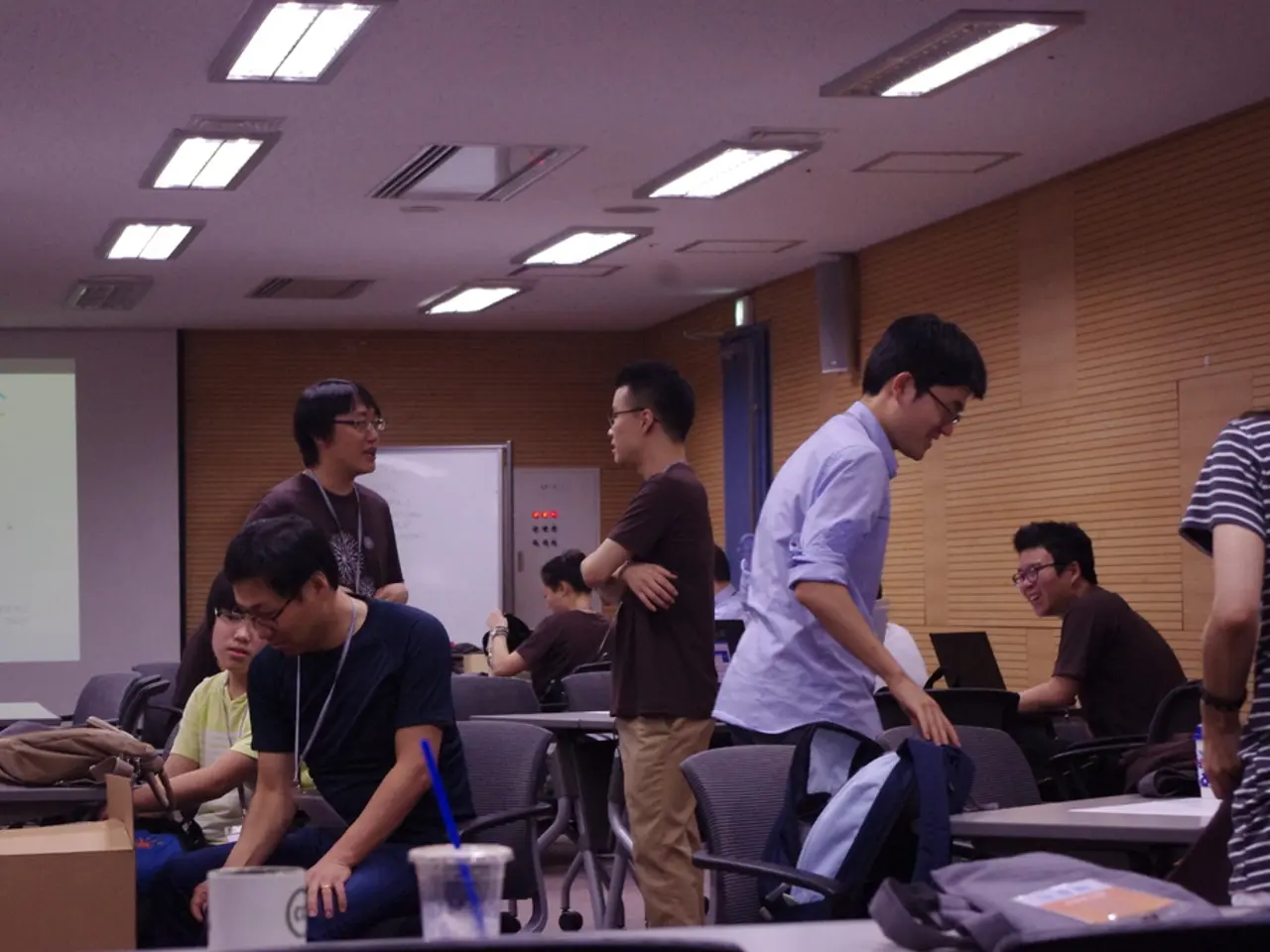Redesigning Educational Environments for Student Empowerment
At the Tech & Learning Northeast Regional Leadership Summit held at Rutgers University, Dr. Adam Phyall, Director of Professional Learning and Leadership at All4Ed, shared his insights on the importance of technology in education.
Phyall emphasized the need for educators to embrace technology to prepare students for their future careers. He pointed out that the jobs that didn't exist in 1994, when the internet was first becoming popular, are a testament to the sea change driven by technology today, particularly AI and other innovations.
In his keynote speech, Phyall highlighted the importance of empowering students to solve future problems using new technologies. He questioned if schools have spaces where students can see emerging tech, and if not, they might just be teaching history. He suggested that schools should provide opportunities for students to explore new technologies.
Strategies for Integrating Emerging Technologies
Effective strategies for integrating emerging technologies into educational spaces include starting with clear learning goals, using technology to personalize and differentiate instruction, providing educator training and support, promoting collaboration, and continuously monitoring effectiveness.
- Start with clear educational goals: Technology tools should directly support these objectives rather than being used for their own sake. For example, if the goal is to increase collaboration, select tools that facilitate group work and communication.
- Introduce technology gradually: Start small with one or two tools and expand as comfort and competence grow, avoiding overwhelming students and teachers.
- Use technology to personalize learning: Leverage AI and adaptive platforms that tailor content based on student performance and learning styles, enabling students to learn at their own pace.
- Incorporate student choice and differentiation: Allow learners to engage with content through formats matching their strengths and preferences, deepening understanding.
- Foster collaborative learning: Encourage peer interaction and shared problem-solving through technology-enabled group work and digital platforms.
- Emphasize training and ongoing support for educators: Ensure effective use and integration of new tools through professional development and technical assistance.
- Utilize AI for administrative efficiency: Free up educators for more meaningful student engagement, and employ AI-driven analytics to identify learning gaps early for timely interventions.
- Integrate gamification and interactive elements: Increase student motivation and information retention by making learning enjoyable and dynamic.
- Ensure accessibility and inclusivity: All students, including those with disabilities, should benefit equally from technology integration.
- Regularly monitor and evaluate technology’s impact: Refine implementation strategies continuously through student feedback and learning outcomes.
Together, these strategies create a technology-rich education environment that promotes personalized, collaborative, and engaging learning experiences aligned with future career and innovation demands.
Teaching AI Ethics and Best Practices
Phyall also stressed the importance of teaching AI ethics and best practices, as AI will be a significant part of students' lives moving forward. He noted that not offering opportunities with emerging technologies can perpetuate inequities in schools, as students of color tend to be behind in technology access and equity.
Phyall's emphasis on AI ethics and best practices reflects the increasing role of AI in students' lives. His keynote at the Tech & Learning Northeast Regional Leadership Summit highlighted the importance of creating spaces for students to empower them and provide tools for them to thrive and solve future problems.
A poignant example of this is Phyall's daughter, who was motivated to create a cancer-screening device due to her father's battle with gallbladder cancer. This demonstrates the potential impact of real-life experiences on students' future endeavors.
Phyall clarified that banning AI is not beneficial, as one of his students pointed out that teachers may assume students don't have internet access at home. He emphasized that exposure to real-life situations can provide unexpected opportunities for students.
In conclusion, Dr. Adam Phyall's vision for technology in education emphasizes the need for educators to embrace technology, teach AI ethics and best practices, and provide opportunities for students to explore new technologies. By doing so, we can create a future where students are equipped to thrive in a world shaped by constant technological evolution.
- Educators can embrace technology in the classroom to help students prepare for future careers and remain competitive in a rapidly changing technological landscape.
- To promote effective integration of technology, strategies such as starting with clear learning goals, providing educator training, incorporating student choice, fostering collaborative learning, and regularly monitoring effectiveness can be utilized.
- By teaching AI ethics and best practices, educators can equip students with the knowledge and skills needed to thrive in a world where AI will play a significant role in their lives, potentially even inspiring innovative solutions to real-world problems.




